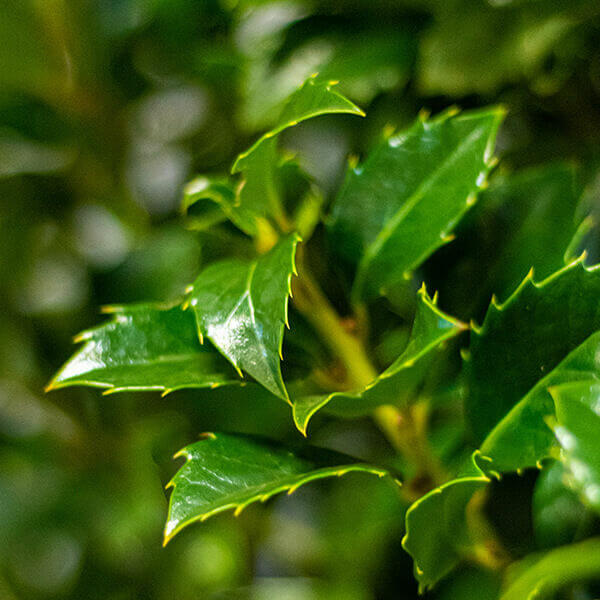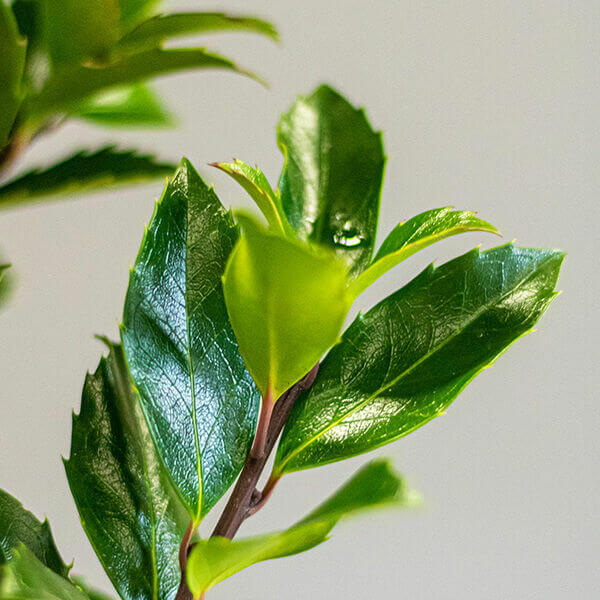Best Hedging Plants For Creating Enclosures
Best Hedging Plants For Creating Enclosures
Blog Article
Hedge Plants For All-round Interest
Improve your garden's allure with lavish hedge ranges such as Yew (Taxus), Thuja, Laurel, Photinia, and Bamboo, commemorated for their structural integrity and ecological benefits.
Yew and Thuja offer evergreen protection and winter strength, while Laurel offers fast development and broad, fragrant leaves.
Photinia includes seasonal beauty with its dynamic red foliage, and Bamboo provides a low-maintenance, serene ambiance.
These hedges enhance air quality, lower sound, and create tranquil, personal areas.
Proper planting, spacing, and maintenance make sure energetic growth and environmental consistency.
Check out how these lush varieties can elevate your garden's charm and wellness.
Secret Takeaways
Transform Your Garden With Lush Hedge Varieties
- Select Yew for its dense, evergreen growth and unequaled durability.
- Opt for Laurel for its quick growth and broad leaves, making sure fast personal privacy.
- Pick Photinia for its vibrant seasonal foliage, which turns a striking dark red.
- Use Bamboo for a low-maintenance, winter-hardy hedge with visual appeal.
- Area plants 2-3 per meter and prune regularly for optimum development and health.
Popular Hedge Plants
When changing a garden with lavish hedge ranges, it's necessary to consider popular hedge plants such as Yew, Thuja, Laurel, and Photinia due to their distinct qualities and benefits.
Yew (Taxus) is extremely respected for its longevity and thick, green growth, making it a prime option for withstanding landscapes.
Thuja is kept in mind for its evergreen foliage and robust winter season strength.
Photinia includes seasonal vibrancy with red leaves that darken gradually, creating vibrant visual appeal.
Laurel offers fast growth and aromatic, broad leaves, suitable for fast privacy.
In Addition, Bamboo is an outstanding option for ambiance, providing a low-maintenance, winter-hardy choice that enhances the garden's aesthetic with its elegant, swaying walking sticks.
These choices cater to a variety of horticultural requirements and choices.
Advantages of Garden Hedges
Garden hedges offer a plethora of benefits, making them a valuable addition to any landscape. These natural barriers are economical to carry out and supply significant wind protection, improving air flow and adding to sound reduction. The dense foliage of hedges like Thuja and Beech ensures privacy by blocking presence, developing a remote and serene environment.
Hedges also play an essential role in microclimate regulation, providing a steady environment that cultivates plant development and lessens temperature changes. Their detailed leaf structures filter toxins, enhancing air quality and adding to a much healthier garden ecosystem.
Furthermore, hedges stand out in sound decrease, taking in and deflecting sound waves to lower ambient sound levels. This double performance of supplying both acoustic and visual personal privacy improves the total serenity and visual appeal of any garden.
Planting and Maintenance Tips
For a successful hedge, meticulous preparation of the planting location is essential. Make sure the soil has appropriate pH and drain to support strong root development.
Area the plants appropriately for the chosen species. Water the hedge often throughout its preliminary growth phase, adjusting as needed with seasonal modifications.
Implement a systematic pest control and illness avoidance strategy, utilizing organic or chemical treatments when needed. Regularly check for aphids, mites, and fungal infections.
Apply mulch to maintain moisture and reduce weeds. Seasonal pruning promotes thick growth and air blood circulation, vital for plant health.
Following these standards will assist you cultivate a dynamic, properly maintained hedge that improves the appeal of your garden.
Spacing and Cutting Guidelines
Spacing and Trimming Standards
Appropriate spacing and trimming are important for cultivating healthy, visually appealing hedges. Appropriate spacing guarantees each plant gets adequate nutrients, light, and air flow.
Follow these guidelines for ideal hedge upkeep:
- Spacing: Position hedge plants 2-3 plants per meter to motivate robust development.
- Pruning Techniques: Regular pruning is vital for keeping desired hedge height and shape. Trim new development in summer season and cut down older wood during winter.
- Seasonal Care: Adjust cutting techniques and schedules according to seasonal requirements to make sure plant health.
- Hedge Height: Regularly display and cut to preserve the wanted hedge height and attain consistent visual appeals.
Abiding by these steps will ensure your hedge prospers, boosting both the appeal and performance of your garden.
Choosing the Right Hedge
Choosing the Right Hedge
Selecting the appropriate hedge involves evaluating aspects such as mature height, foliage density, and environmental resilience. Effective hedge plant choice needs comprehending each species' growth characteristics and site-specific flexibility.
For instance, Yew (Taxus) uses outstanding longevity and dense development, while Thuja is significant for its winter season resilience. Additionally, thinking about maintenance requirements is essential; fast-growing types like Laurel or Privet demand routine cutting, whereas low-maintenance choices like Bamboo or Ivy might be preferable for those looking for minimal upkeep.
Ecological aspects such as soil type, light availability, and wetness conditions must also guide the choice process. This mindful method ensures the picked hedges will thrive, providing both practical and aesthetic advantages to the garden landscape.
Delivery and Planting Guidance
To guarantee your hedge plants flourish, they need to be delivered by specialized carriers and planted immediately upon arrival.
Follow these essential actions for effective planting:
- Soil Preparation: Enhance the soil with natural matter to improve drain and nutrient content.
- Planting Depth: Produce a trench two times the width and equal to the depth of the root ball.
- Watering Strategies: Water thoroughly after planting, keeping the soil consistently wet however not saturated.
- Mulching: Apply a layer of mulch to retain moisture and reduce weeds.
Customer Support and Service
Offered the crucial role of prompt help in horticultural pursuits, our customer support group is readily available six days a week through telephone, email, and social networks to offer professional advice and swiftly attend to any issues. Their dedication to quick reaction times guarantees consumer satisfaction by dealing with inquiries connected to plant health, ideal planting techniques, and upkeep schedules.

Within 24 hours
Social network
This detailed support system, enhanced by an outstanding 9.3/ 10 client ranking, highlights our commitment to improving the gardening experience for every single customer.
Frequently Asked Concerns
For How Long Does It Take for Hedge Plants to Develop?
Hedge plants generally require one to 3 years to end up being fully developed, with the exact period varying by types and growing conditions.
Effective care throughout this important duration is necessary for robust development. Consistent watering, watchful weed control, and proper fertilizer application are pivotal in promoting strong root advancement.
For instance, fast-growing types like Laurel might establish more quickly, while slower-growing varieties such as Yew might take longer. Thorough upkeep accelerates the establishment process, resulting in dense and healthy hedges.
What Are the very best Hedge Plants for Privacy?
The concern of the very best hedge plants for privacy involves evaluating evergreen and deciduous options.
Evergreen hedges like Thuja, Laurel, and Cypress offer year-round protection, making sure continuous personal privacy.
On the other hand, deciduous hedges such as Beech provide seasonal personal privacy, shedding leaves in cooler months.
Secret maintenance suggestions for privacy hedges include routine trimming, fertilizing in spring, and correct spacing-- typically 2 to 3 plants per meter.
In addition, consistent watering and persistent weed elimination are vital for promoting healthy, thick development.
Can Hedge Plants Attract Wildlife to My Garden?
Yes, hedge plants can draw in wildlife to your garden by providing vital advantages like shelter, food, and nesting sites, therefore boosting regional biodiversity. For instance, yew, holly, and laurel are excellent for attracting birds, while ivy supports a variety of insects.
However, it is essential to note that there are some downsides, such as increased maintenance to manage insects and routine upkeep. Carefully choosing and maintaining hedge varieties can assist stabilize these downsides and advantages, ultimately fostering a sustainable and dynamic ecosystem in your garden.
Are There Any Blooming Hedge Plants Available?
Yes, there are flowering hedge plants readily available that can enhance the beauty of your garden.
For instance, Elaeagnus, also understood as Olive Willow, produces fragrant white flowers in the fall, adding a touch of sophistication.
Photinia, another popular choice, showcases dynamic red leaves that mature into a rich green, developing a vibrant visual effect throughout the seasons.
To guarantee these plants thrive, it's important to practice appropriate pruning techniques and seasonal maintenance, such as cutting brand-new growth in the summertime and cutting back in the winter.
These procedures will assist preserve the health and visual appeal of your blooming hedges.
How Do I Avoid Bugs in My Hedge Plants?
To prevent pests in hedge plants, employ natural pest control approaches Additional reading and preserve proper hedge care. Introduce useful insects like ladybugs, which prey on damaging insects, to create a well balanced community.
Regularly check your hedges for indications of problem and promptly remove any afflicted parts to avoid the spread. Make sure the health of your hedges by using balanced fertilizers and offering appropriate water.
Use mulching to retain soil wetness and correct spacing to decrease plant stress and promote robust development. These practices jointly help in lessening pest problems and maintaining a healthy hedge.
Conclusion
In essence, selecting the ideal hedge ranges such as Yew, Thuja, and Laurel can transform any garden into a relaxing haven. These plants supply year-round greenery, boost visual appeal, and offer useful benefits like noise decrease and wind defense.
Correct planting strategies, precise spacing, consistent watering, and seasonal cutting are essential for ideal development.
Dependable delivery services and skilled customer support guarantee a seamless experience from purchase to planting, making it easier than ever to elevate your outdoor area.
Garden hedges use a multitude of benefits, making them an important addition to any landscape. These natural barriers are cost-effective to carry out and provide significant wind defense, boosting air circulation and contributing to noise reduction. The thick foliage of hedges like Thuja and Beech ensures personal privacy by obstructing visibility, producing a remote and peaceful environment.

Pruning Techniques: Routine pruning is vital for maintaining preferred hedge height and shape. Cut brand-new growth in summer season and cut back older wood throughout winter season.
Report this page